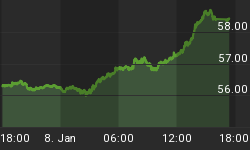Setting aside, for a moment, the technical and psychological aspects of the inter-connected world markets, let's observe the underlying fundamental facts:
The United States Current Account / Trade Deficits, Treasury Debt Issuance and Currency are disproportionately funded by the capital inflows of Foreign Savers and Central Banks.
As the Treasury continues to move down the yield curve in Debt issuance the risks begin to compound very quickly as the underlying assumption is Overnight Rates will continue to be held in check by the Federal Reserve, the Market's attempts will be muted in any attempt to restore "Market Rates" through intervention at all points on the Yield Curve. Shifting the Promise of repayment forward in time creates liquidity, yet multiplies the risks associated with a dislocation in Real Rates. By example, for consumers the net effect of an increase in Real Rates driven by market forces would have a very negative affect on disposable cash flow, thereby reducing consumption in order to service ever more costly Debt. Disposable Incomes would decline dramatically further compounding the decrease in Real Wages currently maximizing returns through Labor Arbitrage in both Manufacturing and Service Economy's Competitive Advantages.
Savers are being punished for prudence as their returns are being held in check in order to maintain the Global primary drivers, the U.S. Consumer and the Federal Government, through exogenous capital inflows and "forcing" capital to seek a market rate of return pacing the rate of inflation. Efficient Capital Allocation is impossible in the current environment of intervention as distortions to Capital Markets are, by design, reducing real alternatives to preservation of capital. One must assume disproportionate risk in order to earn a "Market Rate of Return."
The Quantitative is masking the Qualitative.
Without the Circular Global Capital Flows, Real Rates would soar. Self preservation will continue until it becomes clear to the Global Interventionists the Double Bind is no longer worth the risks of absolute loss. The United States trading partners will continue to maintain this relationship as long as they do not begin to cannibalize their own economies. We are fast approaching that point. Recent data points have made clear the Engine of Economic growth, Debt based Consumption is retracing quickly.
Given the two largest consumers of Debt are the United States Consumer and Federal Government, if the consumer begins to retrench, the Federal Government must pick up the slack in order to maintain the current state of affairs. This, of course, means more Debt issuance at the United States Treasury and debasement of the dollar. In an election year, it will be immensely difficult to lift the ceiling on budget deficits. Instead, the Federal Reserve will begin monetizing this debt. This may not occur on the light of day as the Fed's own balance sheet is swelling due to its purchase of Tier One Debt from Institutions in order to maintain Liquidity.
This will begin to occur at a time when Total Credit Market Debt (including Unfunded Liabilities) exceeds $55 trillion. The egregious amount of additional credit expansion required will be unprecedented in History. Given the fact that Total Credit Market Debt exceeds 50% of Gross Domestic Product, the United States faces a day of reckoning in absolute terms that will have profound effects on the balance of the Financial Globe.
In a purely historical contest, there has been no better time to own physical Precious Metals. Secure yours now. Our creditors are doing so and spending Federal Reserve Notes to do so.
Lead, follow or be left behind as the disinvestment in Dollar denominated assets is picking up momentum and should begin to accelerate dramatically over the course of this year. No Fiat currency will find the faith required when the World's Reserve is abandoned.
The Market will have the final word and not the Global Interventionists.
















